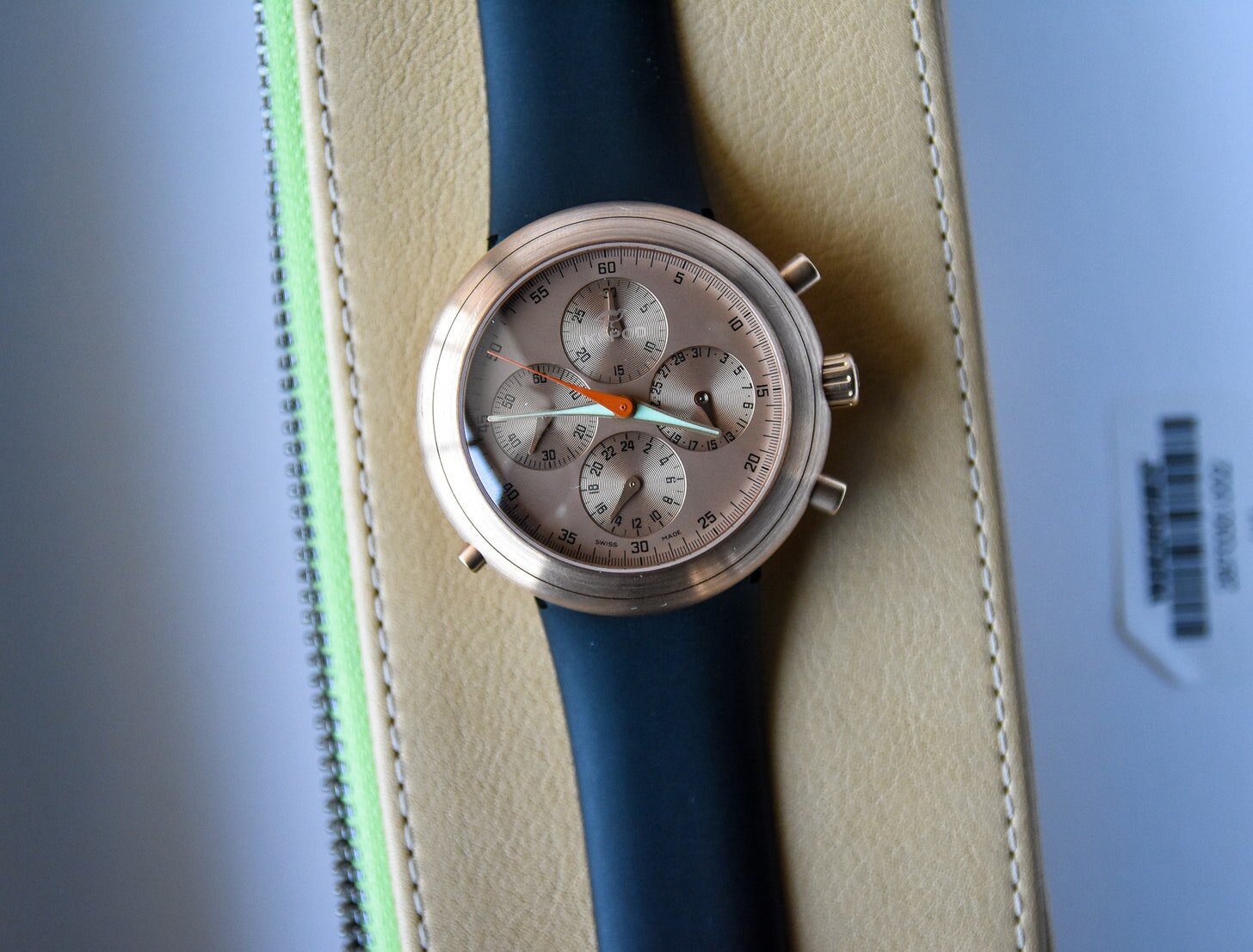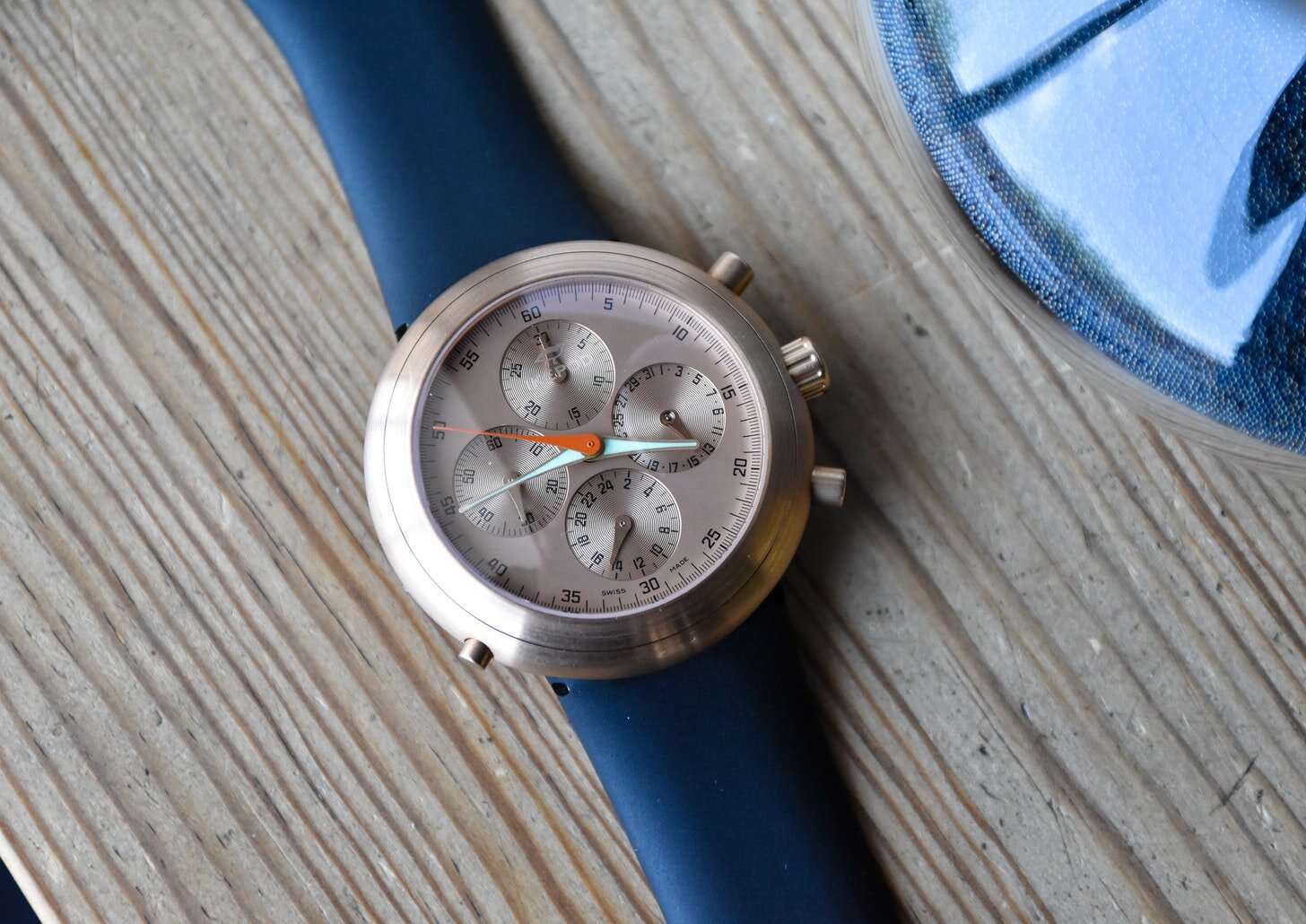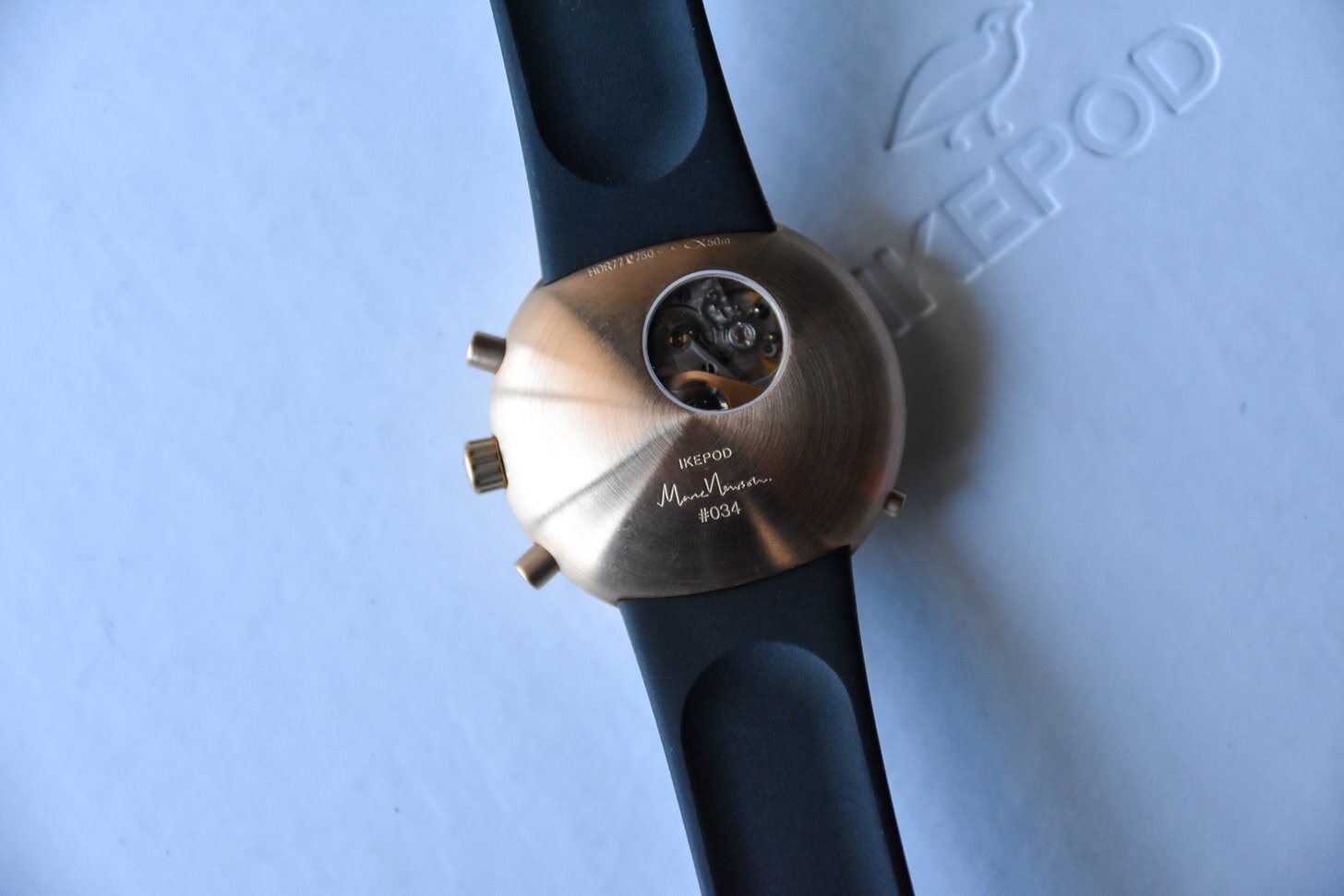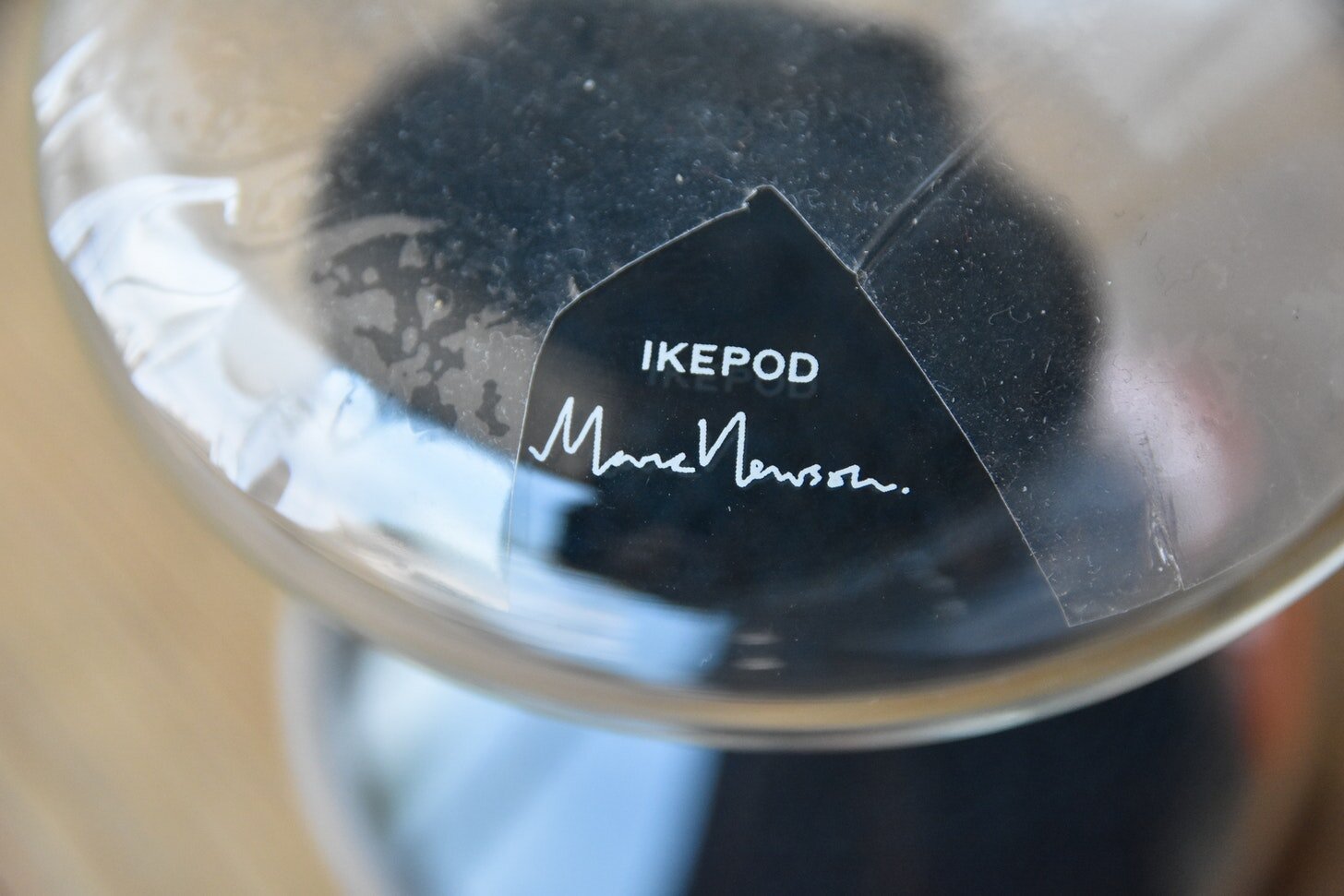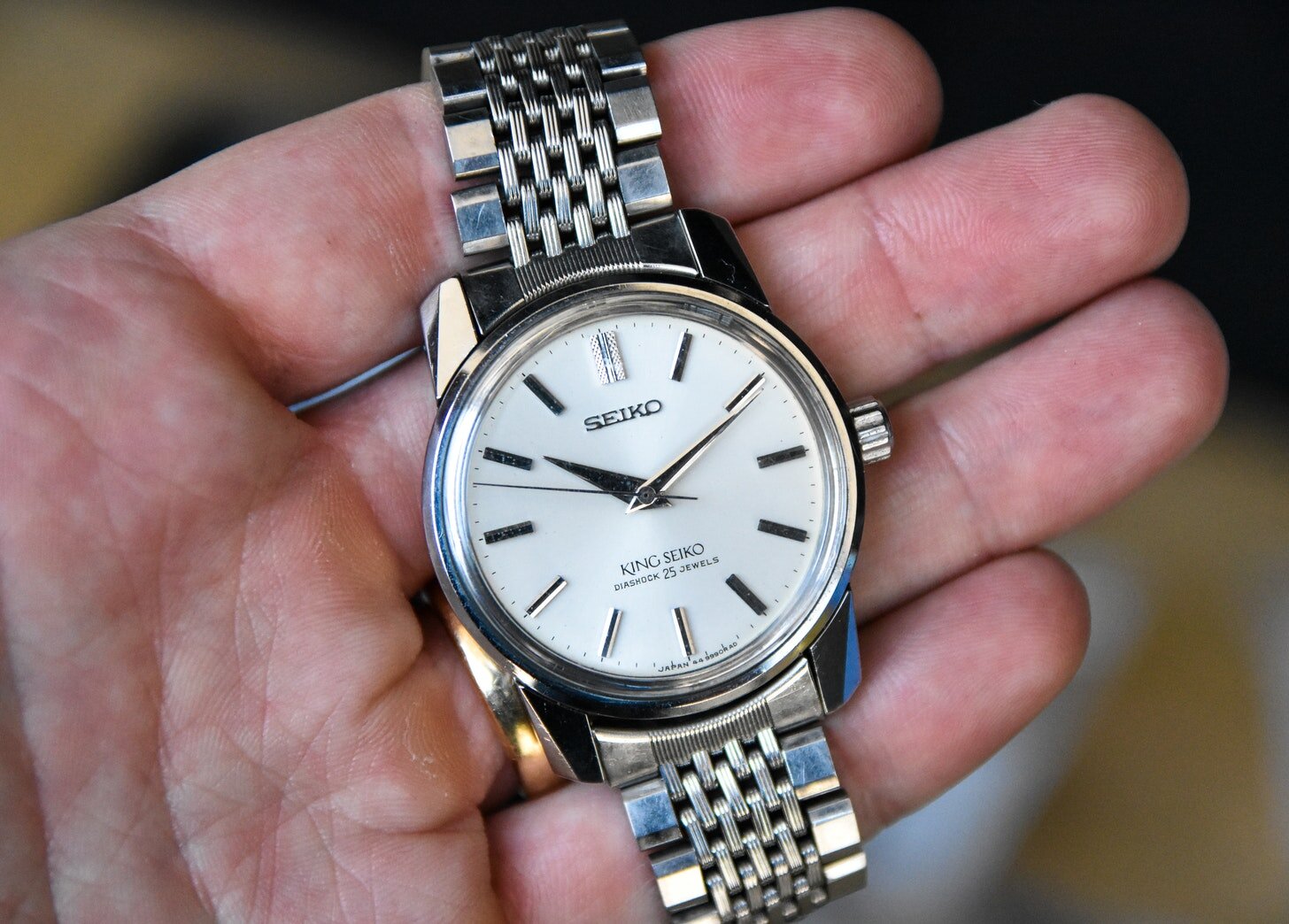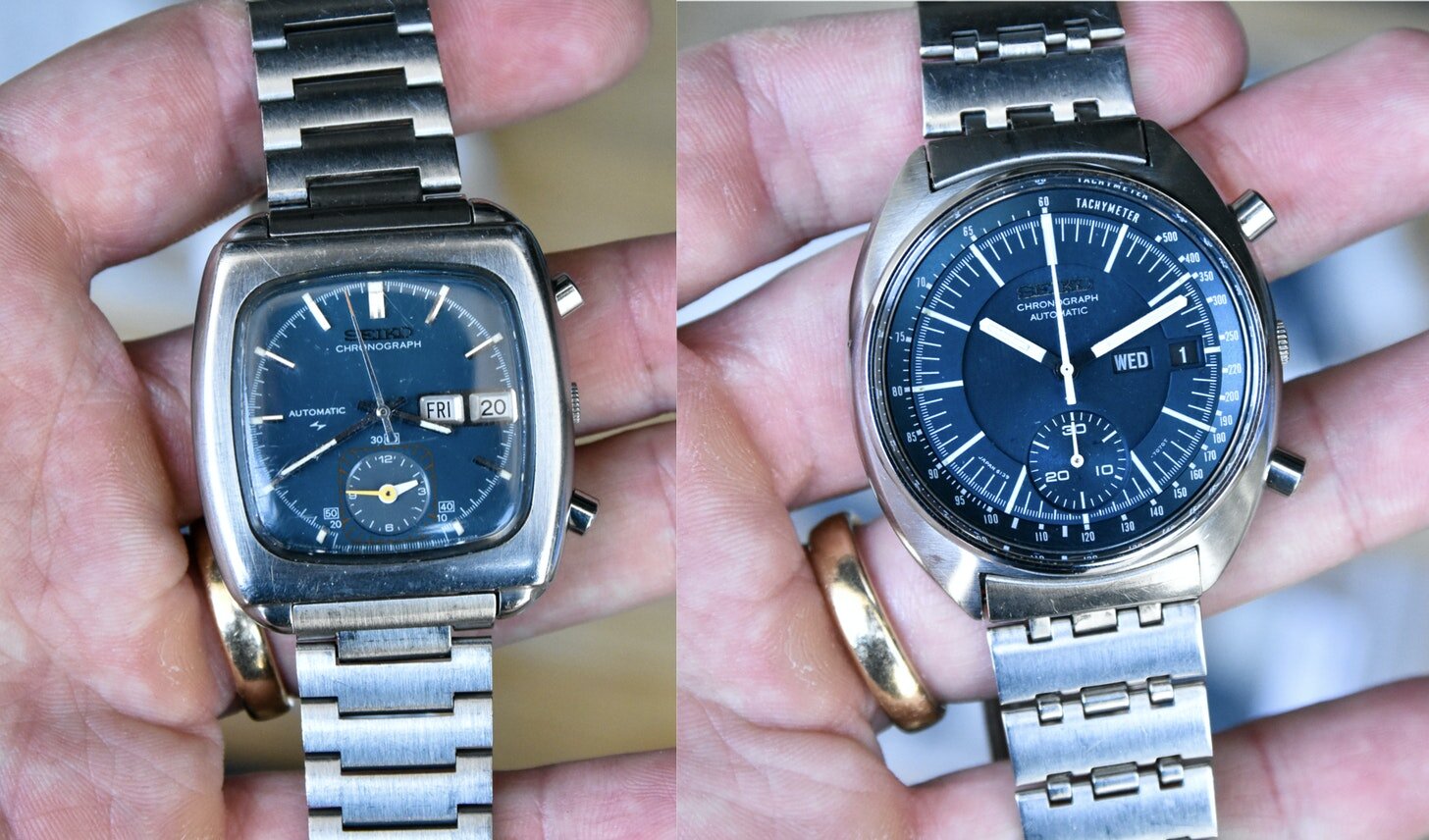I’m not really a design guy, whatever that means. Sure, I’m vaguely aware of design and follow Dwell on Instagram, but I’m still in the “wait, that chair costs how much?” stage of understanding.
Living in Chicago, you’re almost given some appreciation of design or architecture by default — walking in the footsteps of Frank Lloyd Wright, looking up at the towering creations of Burnham, Mies van der Rohe, Gang, and so on.
That said, watches are most accessible as objects of design. Personally, I’m attracted to a case shape or dial design before I care about the movement. The crossover between design and watches is fascinating, and one worthy of further exploration. I appreciate a hammered and funky Enicar just as much as a pristine Cartier, but sometimes it feels like the discussion of “design” in watches either excludes or ignores the former in praise of the latter, in pursuit of some elevated aesthetic-as-a-lifestyle.
That’s why I was excited to visit Wright Auction this week. Founded by Richard Wright in 2000, Chicago’s Wright Auction is a leader in the modern and contemporary design space. While they don’t necessarily focus on selling timepieces, they’ll sell interesting watches when they come across them. Such is the case with their June 10 Important Design Auction.
Featured prominently in the sale are a couple of timepieces designed by legendary designer Marc Newson, as well as a small collection of vintage Seikos. Let’s take a look.
Ikepod Hemipode Chronograph
I’ve written about the Ikepod Hemipode before, what with Kanye West referring to it as “his favorite wristwatch” and all. But the Hemipode is an interesting watch in its own right, even without Mr. West’s endorsement.
Ikepod was founded in 1994 by a Swiss businessman named Ike, who hired legendary designer Marc Newson to design wristwatches for him. One of the first Newson designed was the large Hemipode, a watch that was big for its time, helping to start the trend of inflated diameters (along with the Royal Oak Offshore and others of the early 90s).[1]
The Hemipode is such a playful design you almost forget you’re handling a huge chunk of 18kt rose gold. The model at Wright is a Hemipode Chronograph, powered by a Valjoux 7750 movement (Kanye wore a slightly different model). Ikepod actually modified the Valjoux movement to add a GMT module, which is why you see the 24-hour subdial, controlled by the pusher at 7 o’clock.
Of course, you’re immediately reminded of the Apple Watch once you strap it on, the most recent horological object that Newson assisted in designing. The rubber strap is the same as Apple’s, with the clasp intelligently designed to hide underneath the strap. But the rest of the experience is much more luxurious than strapping on a smartwatch. The gold case is heavy, the rubber strap feels more robust, the movement uses high-quality components that you can peek at through a window on the case back.
The Hemipode measures 45mm in diameter, but don’t let that big number fool you: with no lugs, it wears much smaller. Consider that Apple’s standard Apple Watch measures 44mm in diameter, and most wrists have no problem handling it. That said, the case back bubbles to accommodate the automatic movement, so the spherical shape does sit high on the wrist, your own personal UHO (that’s “unidentified horological object”).
This particular example also comes with all its original packaging — a huge box and a quality leather watch case with Ikepod’s bird logo (put a bird on it!).
See lot 211, est. $10k-15k.
Marc Newson x Ikepod Hourglass
aaaaaaaaah
If you want, you can start quite the collection of Marc Newson objects at this week’s sale. Next up is an Ikepod hourglass, also designed by Mr. Newson. This is the small version of the design, a 10-minute counter that measures about 150mm tall.
The glass is completely hand-blown from a single piece of borsilicate glass, and after watching two seasons of Blown Away on Netflix, I have some appreciation for exactly how difficult that is.
Inside, each hourglass is filled with 1.3m stainless steel nanoballs that measure 0.6mm in diameter. When you flip over the hourglass, the first few balls bounce chaotically around the chamber, but soon settle in and the remaining million or so balls begin to create a totally mesmerizing sound that someone told me this week sounds like a “horological rain forest.”
The hourglass is a total sensory experience. I flipped it over a few times to play with it and watch the nanoballs fall through the chamber, but before I knew it I’d been watching for a few minutes, inexplicably entranced by the movement and sound of this seemingly simple object. Honestly, the last time I remember a timepiece causing this sort of reaction was the first time I saw the Grand Seiko Spring Drive in motion, with the second hand gliding smoothly across the dial.
And if you can’t afford $10k+ for an hourglass…at least there’s this 3-minute video showing the making of said hourglass. Pure ASMR:
Phillips sold an example for about $13k in Hong Kong last year. The similar Hodinkee x Newson hourglasses retail for $12k, and the hourglasses retailed for $13k when they were first released back in 2011.
See lot 212, est. $12k-18k.
In addition to the two Newson-designed timepieces, Wright is selling a small collection of vintage Seiko watches. While Newson’s designs are modern and minimal, Seiko’s vintage designs are bold and funky, save for this first lot, a vintage King Seiko.
King Seiko Ref. 44-9990 (‘44KS’)
Sure, Grand Seiko gets all the attention (including from this ‘sletter), but King Seiko is no less worthy. Back in 1959, Seiko created two separate entities —Suwa Seikosha and Daini Seikosha — to promote a little healthy inter-company competition. It worked, and by the mid-60s, Seiko was producing some of the most accurate chronometers in the world.
Seiko’s famous “Grammar of Design” rules were first formulated by designer Taro Tanaka in the early 1960s, and the first King Seiko design to fully implement these rules was the King Seiko 44KS. The model was produced from 1964-1968 and remains one of King Seiko’s best and most accessible vintage references.
This 44KS completely captured me when I saw it. Your eye is immediately drawn to the case, and for good reason. The thick lugs have sharp, angled bevels, a contrast to the simple, circular case. The lugs almost remind me of the bold lugs found on Enicar Sherpa cases, but the effect is much different when they’re found on a dressier watch like the 44KS.
Measuring 36.5mm in diameter, with 19mm lugs, it’s also an imminently wearable watch (the King Seiko-signed bracelet is also a nice touch here). The most interesting thing about these vintage King Seikos is the way the highly polished and angled surfaces catch the light in different ways. Tanaka said he wanted his watches to “sparkle brilliantly” like their Swiss counterparts, and he was able to achieve that merely by playing with shapes and angles, a true testament to his ability as a designer.
With Grand Seiko re-introducing King Seiko as a brand in 2020, I have to imagine that appreciation (and perhaps, prices) for these vintage King Seiko models will only increase in the next few years.
See lot 278, est. $1,000-$1,500.
A few more highlights from the Seiko portion of Wright’s Important Design Auction:
Seiko Diver Ref. 6105-8119
See lot 277, est. $1,800-$2,500.
Seiko Chronographs
Pierre Jeanneret table from Chandigarh | Wright Auction
As you might imagine, Wright’s design sale also features dozens of works by legendary designers like Pierre Jeanneret and his cousin, Le Corbusier (née Charles-Édouard Jeanneret). Interestingly, one well-known Swiss case maker of the 20th Century was named Henri Jeanneret (hammer 166 for those following along). Jeanneret produced beautifully angled and faceted cases found in chronographs from Zenith, Universal Geneve, and others. Was it all in the family? I have literally no idea, and scrolling through Swiss family trees has gotten me nowhere. So if you’ve got any info that might show H. Jeanneret had a relationship with fellow Swiss Pierre or Le Corbusier, drop me a note!
Check out the full catalog for Wright Auctions’ June 10 Important Design sale here. Thanks to Richard Wright and Wright Auction for allowing me to visit the warehouse and preview the sale.
